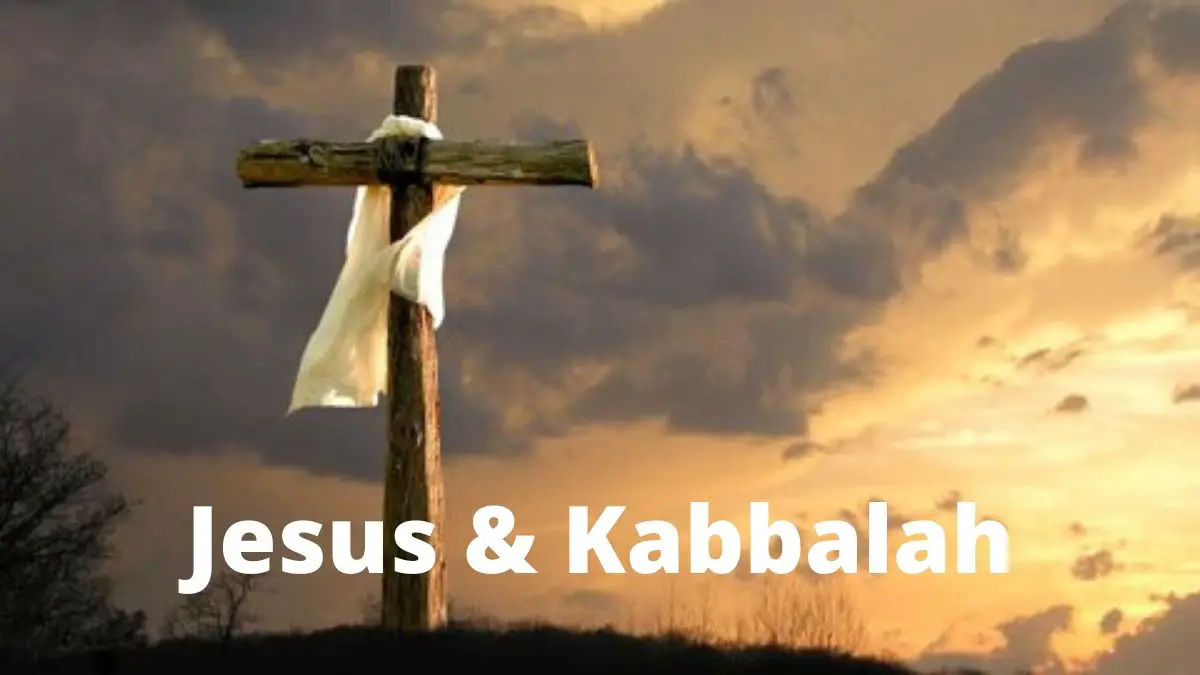Before providing closure to the subject on the different kabalistic traditions, it is convenient to clarify what concerns Jesus of Nazareth and his link with the Kabbalah Creation Story.
I read in a book called “Universal Kabbalah,”, a chapter that refers to “Jesus, the Kabalistic rabbi of Nazareth.”
Below I copied some comments that are written in that book:
Kabbalah and Christianity
There was a Kabalistic rabbi, which means that he participated in the ancient Jewish mystic religion, which came from Nazareth.
The most important argument for considering Jesus as part of the Jewish community of that time could be found in his belief in a God. No other nation or religion of that time believed in the concept of one God as creator.
Jesus was an orthodox rabbi. The first Christians, for at least 40 years, were a group framed within Judaism.
This movement of Jesus was a Jewish group that used Jewish traditions to express their allegiance to Jesus of Nazareth. This movement became what we today call Christianity.
Shammai and Hillel Houses
In the time that Jesus lived, there were five classes of Pharisees and Jesus only criticized those who were “fraudulent”. There were two main branches and another three minor branches of Pharisees.
Of the main one was the House of Shammai and the other was the House of Hillel. Those in power could make theological decisions, those rabbis belonged to the House of Shammai.
Because of the two Houses, Judaism was divided into two different ways of focusing their religious traditions.
Those who belonged to the House of Shammai wanted to isolate Israel so that it had to survive in a hostile world.
They were very strict in interpreting laws and wished to have little or nothing to do with Gentiles.
They can be compared to any fundamentalist sect of our time, unable to see the Light and worrying only about the strict observation of what they only knew as the truth. There was no communication, no attempt at dialogue or compassion.
Rabbi Hillel, who is much more revered today, had a very different nature. Hillel, founder of the school that bears his name, died around 10 AD, and asked his disciples to love humanity.
His followers joined the Essenes around 20 BC, when the fundamentalism of House Shammai acquired religious power in Israel.
At that time, among those Essene Hasidim and disciples of Hillel, Jesus of Nazareth emerged to fulfill his mission.
Hillel and House Hillel showed compassion toward Jews and Gentiles alike. Their discourse was humble, they acted in maintaining effective relationships, they fostered the spirit of the Law and they fervently believed that all humanity could be chosen for their salvation.
Paul – who did much to found the Church, was a disciple of Gamaliel the Elder, a kabalistic rabbi who was Hillel’s grandson.
When the Sadducees, a priestly hierarchy, ruled the Temple before the arrival of Jesus, mystical discussions were forbidden.
Jesus and Kabbalah
According to the non-Jewish Kabalists, the baby Jesus Ben Joseph, when the wise doctors of the law heard him speak in the temple at the age of 12 and recognized his ability, he was sent to the Essene community that lived near the Dead Sea so that they will form it in the mystical tradition of Israel.
Jesus himself is recognized in the esoteric tradition as a Kabalistic teacher. Those among us who are Christians should find our roots in Judaism.
This is because Jesus was a Jew, and, judging from his works, someone very familiar with Kabalistic thought.
Jesus’ emphasis on his ministry should be based on love and mercy. Both Jesus and Hillel were Kabalists. Jesus used his own personal language and method of action.
He mixed goodness, forgiveness and spiritual awakening. As a Sacred Man, he presented Jesus’ emphasis on his ministry should be based on love and mercy. Both Jesus and Hillel were Kabalists.
Jesus used his own personal language and method of action. He mixed goodness, forgiveness and spiritual awakening. As a Sacred Man, he presented a focus of thought and acted in one direction.
The approach to Kabalah is of two different types. One is done through the study. It is an intellectual and analytical method, where the person who studies it remains “outside”.
The other method combines meditations, singing, study, prayer and experiences. That method is carried out from “inside”. Very few people who study Kabbalah can speak from “inside”.
Judging from the acts and the deeds of Jesus, it seems clear that the union of Hochma and Bina -of intellect and effective intuition- has taken place and that his consciousness was enlightened. Jesus spoke from “inside”.
So that Jesus could speak with that closeness with the Almighty, the experience must have been real. As a result of his encounter with the Almighty in meditations, Jesus underwent a drastic change. The importance of God’s love came to dominate his thinking.
The above comments affirm that Jesus was a Kabalist, but he is presented as a valuable and worthy exponent of a Kabbalah that was simply the mystical aspect of Judaism, an idea repeated insistently by almost all Kabalist Jews.
However, when learning a little about Hillel’s life, the founder of the school in which Jesus is said to have participated, we find data that gives us a different perspective.
The fact that Hillel was a native of Babylon, where he lived until he was forty years old, leads me to think that he was trained in the Chaldea tradition of the Kabbalah and not in the Jewish one.
Therefore, although Jesus was an Israelite by birth, it does not mean that he was a practitioner of the Jewish religion.
In addition, we can think that the differences between the Hillel and Shammai Houses were not due to different positions assumed by Jewish rabbis but rather because of the fact that they were exponents of different traditions: one Kabalist and Chaldean, that of Hillel, and another of the Jewish orthodoxy, that of Shammai.
Creation Story
Today, Christianity is known as a religion based on the teachings of Jesus. If one accepts that Jesus was a Jewish Kabalist rabbi, then one should also assume that all the elements of this new religion were taken from Judaism.
But if instead we adopt the view that Jesus was a Kabalist of the Chaldean tradition, then the roots of Christianity are not found in the Jewish religion.
Investigating a bit about the roots of Christianity, I found arguments that point to a non-Jewish origin.
I will quote first what Sri Parvathi Kumar refers to: “Jesus was taught by Joseph and Mary, who had the knowledge of Magic and were members of the Secret Occultist School of Assyria.
Magic was known in India, Greece, Chaldea and Assyria, and even Jesus formed himself later in these same schools.
Joseph is the great Teacher of all the great Ritualist Orders that exist today on the planet and Mary was one of the great disciples of the Himalayas Hierarchy.
While Joseph trained the boy until he was twelve, the remaining eighteen Jesus spent in India completing his training. Mary was at Jesus’ side until the resurrection”.
Jesus is not how you know him. He was not an ordinary man.
Jesus was a fulfilled man and became a holy man. He knew his creator through his meditations, just as we can do.
His acts were inspired by his soul “Neshama” (Soul) and he loved without limits but in a balanced way thanks to reason.
To recognize the stature of Jesus the man means to attribute more glory to him than to falsely recognize Jesus as God. He was a child of God, like all of us.
The difference is that Jesus had ascended his ladder. He has achieved what all of us can achieve. He has shown a path, a path that we can all follow in a unique way. The Eternal Being has given us extraordinary models in all religious traditions. Jesus is one of those models.


